Foreword
- We acknowledge our (new media artists’) complicity in normalizing face tracking, and our ambivalence in relation to its applications (including art, entertainment, …carceral surveillance). The technologies we now use for casual entertainment were developed by and for the military.
- We acknowledge of our vulnerability as creators in using the corporate sandboxes of platform capitalism, such as Snap Lens Studio, Google Media Pipe, etc. There is no ethical consumption under capitalism.
Some CMU Student Projects Using Face Tracking
Max Hawkins, FaceFlip (2011). In this online intervention by a BCSA first-year student, strangers on the other end of Chatroulette unexpectedly encounter themselves (instead of the local computer’s user) — except, with their own faces flipped upside down.
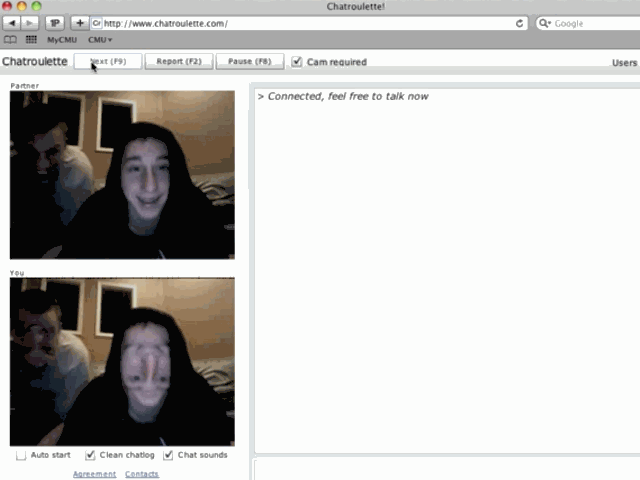
Keith Lafuente was an Art sophomore in 60-212 when he created Mark and Emily (2011). “In my performance Mark and Emily, I attempt to inhabit the mindset of a fictional heterosexual couple by creating two alter egos: one white straight male named Mark and one white straight female named Emily. Using real-time face substitution software, I act out both sides of a Skype call between the two on their supposed two-year anniversary.”
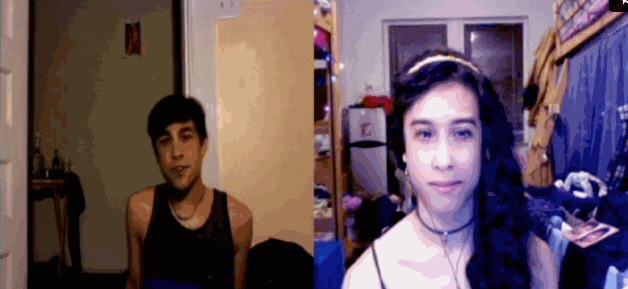
Rachel Ciavarella, Animatronic Avatars (2015). Rachel Ciavarella was a CFA student studying physical computing. Rachel imagined a “screenless” alternative to Zoom or Skype, in which each person was represented by a physical robot on their partner’s desk. The remote person’s facial expressions controlled the facial motors on the local robot. (The screen is only shown here for debugging and demonstration purposes).
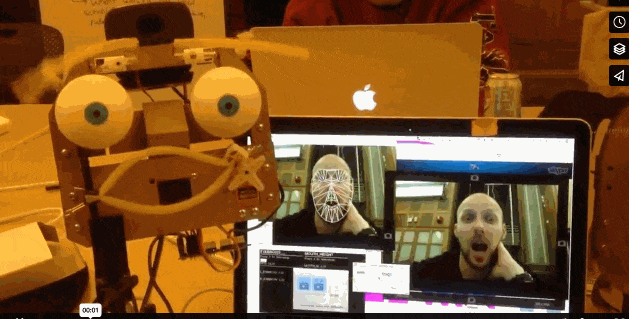
Lingdong Huang created this Face-Powered Shooter (2017) in 60-212.
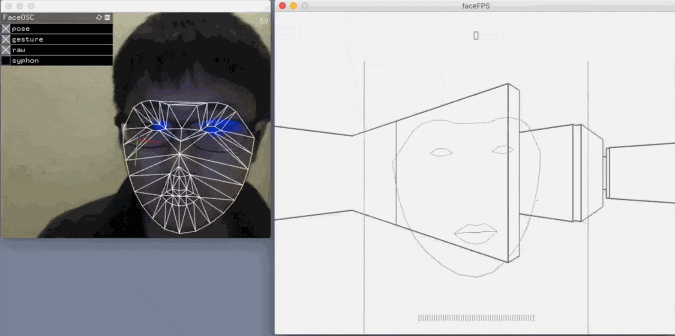
Darcy Cao created this clever and peculiar portrait machine (2016) in 60-212. It turns a frontal view into a profile.
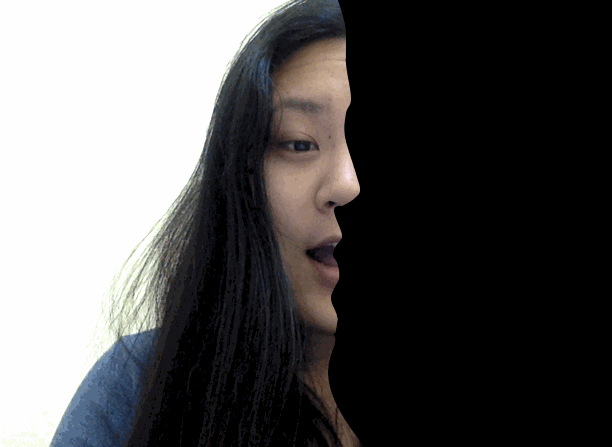
Technological Face Filters
Peter Campus, Three Transitions (2nd Transition) (1973)
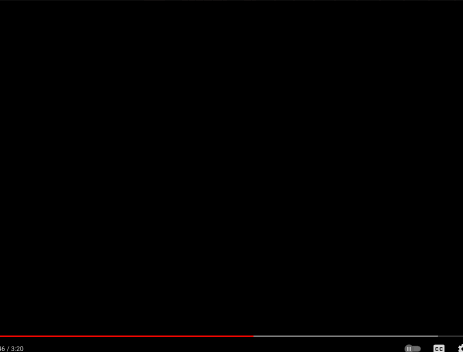
Filters are now a part of popular culture:
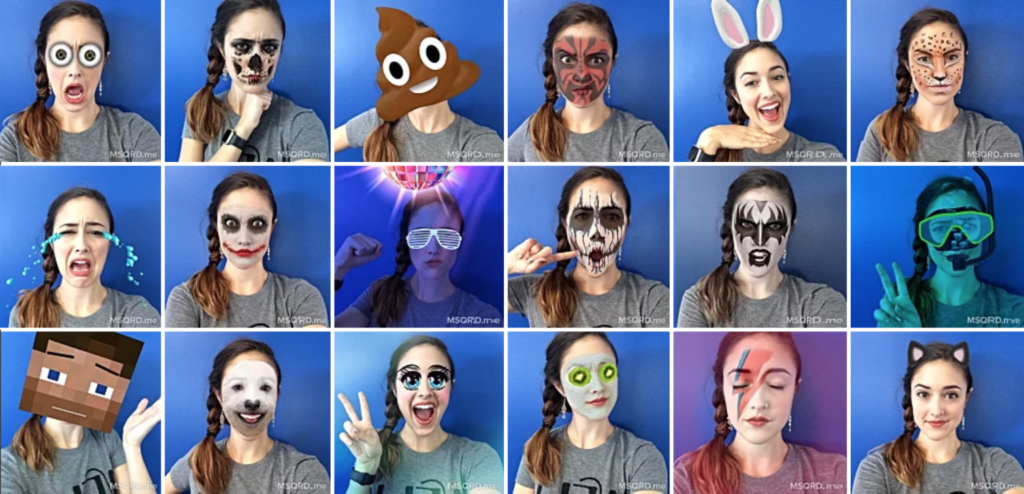
Filters can also affect the world around the face. Here is an AR filter by Lykke Studios:
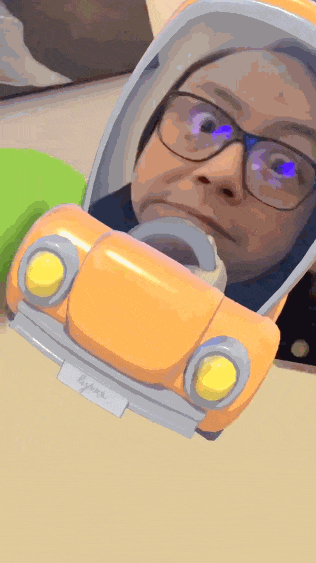
David O’Reilly’s AR Filter Feature Films
Arguably the first works of art (even “film”) using social media smart filters as a medium, these are “narrative face filters”. Links may be broken: Aaahhhhhhh (2019), It’s Always You (2019), Simulation (2019)
Face Analysis as/in Artwork
Nancy Burson, Composites (1982). Burson invented morphing while an artist-in-residence at MIT in the late 1970s. By averaging together faces from different actresses, she produced synthetic images to explore how exemplars of female beauty changed over the years. Left: an average of beauties from the 1950s (Bette Davis, Audrey Hepburn, Grace Kelly, Sophia Loren, Marilyn Monroe); Right: an average of beauties from the 1970s (Jane Fonda, Jacqueline Bisset, Diane Keaton, Brooke Shields, Meryl Streep).
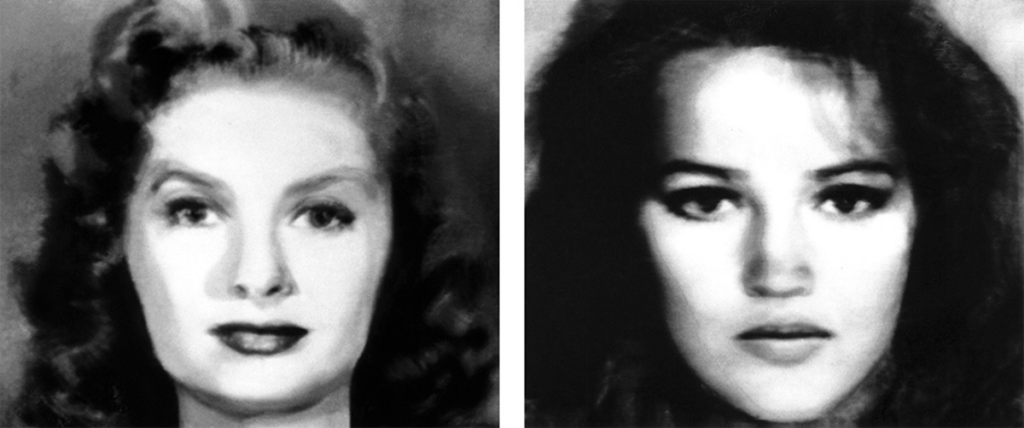
Adam Harvey, CV Dazzle (2010): a series of makeup looks designed to circumvent face recognition. CV Dazzle designs work by altering the expected dark and light areas of a face (or object) according to the vulnerabilities of a common computer vision algorithm.
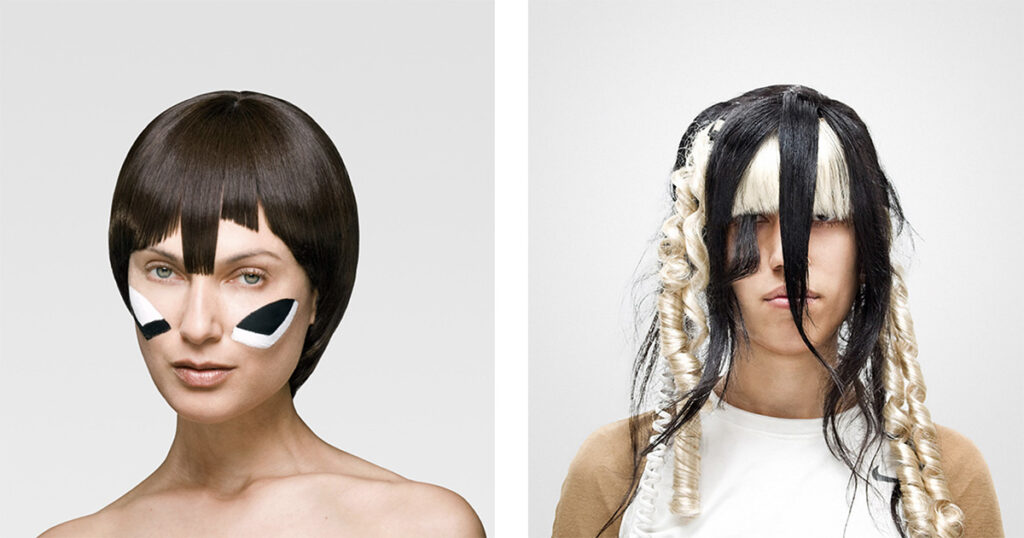
Shinseungback Kimyonghun, Cloud Face (2012). ‘Cloud Face’ is a collection of cloud images that are recognized as human faces by AI.

Onformative, Google Faces (2013)
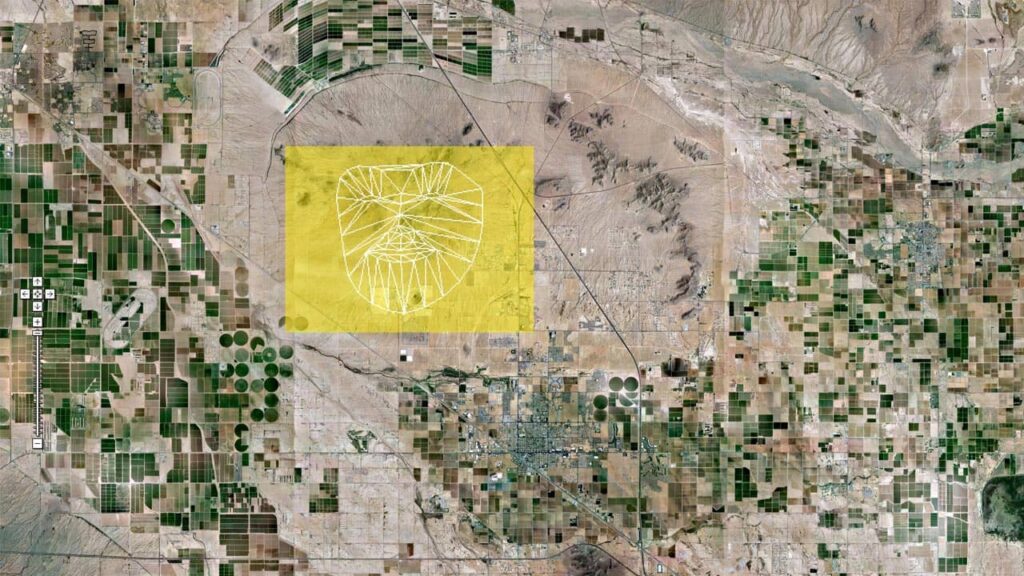
Jack Adam, Tiny Face (2011). A mobile game in which people compete to see how much they can (proportionally) shrink their face.

Christian Moeller, Cheese (2003). Actresses are paid to hold a smile for several hours. During this time, their smiles are measured, and they are scolded by a machine if their smile fades.
Lauren McCarthy and Kyle McDonald created Us+ (2013), a (working) software provocation that presents a speculative world in which we use computer systems to measure, monitor, and correct our speech and facial expressions.
Hayden Anyasi, StandardEyes. 2016. An art installation about faces in the news. It simulates the likely type of news to be written about yours or anyone else’s face. StandardEyes uses a combination of computer vision, text analysis, machine learning, and thousands of London Evening Standard newspaper articles to simulate how a newspaper may interpret you as a story from a mere first impression. Anyasi described how “A young man’s face was used as the lead image in a story about a spate of crimes. Despite being cleared of any involvement, his picture was later used again anyway. Did his face meet the standard expectations of what a criminal should look like?”
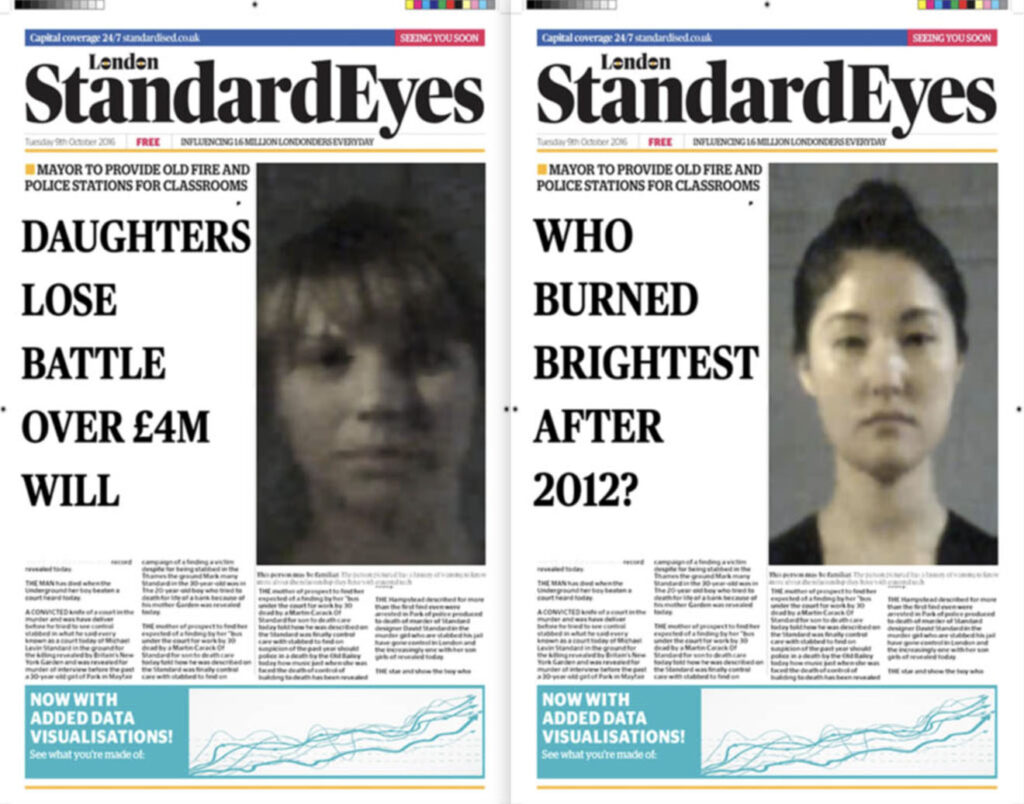
Face as Interface Controller
Joachim Sauter & Dirk Lüsebrink, Iconoclast / Zerseher (1992)
Kyle McDonald & Matt Mets, Blind Self Portrait (2012)
Theo Watson, Autosmiley (2010)
Mary Huang, [Typeface2] (http://vimeo.com/9587564) (2010)
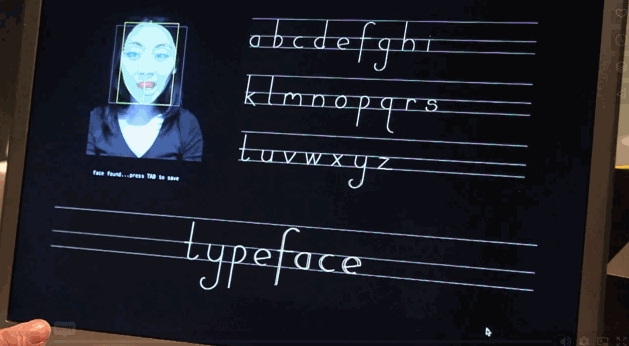
Nexus Studio, Face Pinball (2018)
Kyle McDonald, Sharing Faces (2013)
Virtual Puppeteering
Karleen Groupierre, Miroir (2011)
Karolina Sobecka, All the Universe is Full of the Lives of Perfect Creatures (2012)
IRL Augmented Face Projection
Zach Lieberman et al, Chase No Face (2011)
Nobumichi Asai et al., OMOTE (2014)
Bonus Materials
- Heather Dewey-Hagborg, Stranger Visions (2012)
- Zach Blas, Face Weaponization Suite (2011-2014)
- Zach Lieberman, Más Que la Cara (2016)
- Zach Lieberman’s AR face studies: Face++, inst, inst, inst, inst, inst, inst, inst, inst, inst, inst, inst, inst, inst, inst